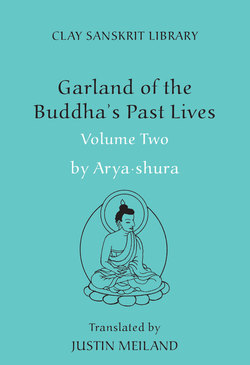Читать книгу Garland of the Buddha's Past Lives (Volume 2) - Aryashura - Страница 16
На сайте Литреса книга снята с продажи.
ОглавлениеSuch participation by others in the Bodhi·sattva’s lives is also emphasized in other stories. In some cases it is expressed in the instrumental or catalytic sense of providing a context for the Bodhi·sattva’s performance of virtue. In “The Birth-Story of the Buffalo’ (33), for example, the need for forbearance to have a context in which to operate is expressed by the tale’s maxim: “Forgiveness only exists if there is something to forgive, not otherwise.” Indeed the Bodhi·sattva of the story (a buffalo) interprets the insults inflicted on him by a mischievous monkey as a benefit, since they provide him with an opportunity to practice forbearance:
There is never a wrong time for forbearance.
But the occasion is rare as it depends on others.
So if another person produces an opportunity,
why would one resort to anger? (33.22 [14])
Other stories move beyond a merely instrumental form of agency to focus extensively on characters other than the Bodhi·sattva. A startling example is provided by ‘The Birth-Story of the Goose’ (22), in which the main protagonist of the story is in fact not the Bodhi·sattva (a king of geese) but the Bodhi·sattva’s general Sumukha. Sumukha’s prominent role is highlighted by the fact that not only does the prose introduction give a longer description to Sumukha than to the Bodhi·sattva, but also the story breaks the convention of identifying solely the Buddha’s former rebirth by identifying Sumukha as the former rebirth of the monk Ananda. Moreover, the main focus of the story is on Sumukha’s devotion to his king. In fact it is this quality that resolves the conflict in the tale between the geese and their hunters ________
